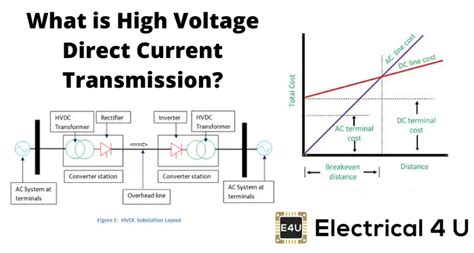lv hv | difference between hv and lv cable lv hv An HV power distribution system simply means a high voltage distribution system while an LV is a low voltage or tension power distribution system. LV power supply can be around 230 Volts for a single-phase connection and 400 Volts for a three-phase connection.
View, graph, and download Alberta weather data for more than 350 stations. View precipitation, temperature, wind, normals, extremes, heat units and more.
0 · what is high voltage hv
1 · hv vs lv distribution
2 · hv power distribution system
3 · hv lv switching
4 · hv lv meaning
5 · hv lv connector
6 · difference between hv and lv cable
7 · difference between hv and lv
From cool aviators to classic round sunnies, discover all-new sunglasses for .
The HV/LV Safe Working Practice Guidance course at EPIT is ideal for those seeking to deepen their understanding of safe working practices in both high and low voltage environments. This .
What is HV and LV? HV/LV refers to the level of voltage within the electricity supply; this is either high voltage or low voltage. This infrastructure allows the electrical supply for various areas of a site to be altered depending .The HV/LV Safe Working Practice Guidance course at EPIT is ideal for those seeking to deepen their understanding of safe working practices in both high and low voltage environments. This course provides updated guidance on safety protocols, isolation procedures, and HV/LV switching. Participants gain insights into the latest industry standards . What is HV and LV? HV/LV refers to the level of voltage within the electricity supply; this is either high voltage or low voltage. This infrastructure allows the electrical supply for various areas of a site to be altered depending on the requirements of the equipment. Curious about HV and LV electrical infrastructure and how it could improve your business operations? In this video, we explain what HV (high voltage) and LV .
An HV power distribution system simply means a high voltage distribution system while an LV is a low voltage or tension power distribution system. LV power supply can be around 230 Volts for a single-phase connection and 400 Volts for a three-phase connection. You will learn the types of HV starters and their protections, to define the locking (lockout) systems between HV and LV cubicles and design an LV switchboard (at least know the principle).

what is high voltage hv
When selecting a low voltage main distribution system, the prerequisite for its efficient sizing is knowing about its use, availability and future options for extension. The requirements for power distribution are extremely diverse.PVC, XLPE, rubber, and control cables are commonly used for LV applications, while XLPE, oil-filled, and gas-insulated cables are used for HV applications. Understanding the different types of LV and HV cables is critical in selecting the right cable for a specific application.HV (high voltage) and LV (low voltage) are the two basic categories (low voltage). HV type is used to power motors and electrical equipment that operate on more than 1000 volts AC, whereas LV type is used to power electrical devices running on less than 1,000 volts AC.
An insight, background on the main character and topologies of the LV networks with highlighting the key differences between LV networks and both high-voltage (HV) and medium-voltage (MV) networks is provided.In this blog, we present the definition of LV, MV and HV, the differences between voltages and their usage areas and more for you. What is the definition of Low Voltage, Medium Voltage and High Voltage?The HV/LV Safe Working Practice Guidance course at EPIT is ideal for those seeking to deepen their understanding of safe working practices in both high and low voltage environments. This course provides updated guidance on safety protocols, isolation procedures, and HV/LV switching. Participants gain insights into the latest industry standards . What is HV and LV? HV/LV refers to the level of voltage within the electricity supply; this is either high voltage or low voltage. This infrastructure allows the electrical supply for various areas of a site to be altered depending on the requirements of the equipment.
Curious about HV and LV electrical infrastructure and how it could improve your business operations? In this video, we explain what HV (high voltage) and LV .
An HV power distribution system simply means a high voltage distribution system while an LV is a low voltage or tension power distribution system. LV power supply can be around 230 Volts for a single-phase connection and 400 Volts for a three-phase connection. You will learn the types of HV starters and their protections, to define the locking (lockout) systems between HV and LV cubicles and design an LV switchboard (at least know the principle). When selecting a low voltage main distribution system, the prerequisite for its efficient sizing is knowing about its use, availability and future options for extension. The requirements for power distribution are extremely diverse.PVC, XLPE, rubber, and control cables are commonly used for LV applications, while XLPE, oil-filled, and gas-insulated cables are used for HV applications. Understanding the different types of LV and HV cables is critical in selecting the right cable for a specific application.
HV (high voltage) and LV (low voltage) are the two basic categories (low voltage). HV type is used to power motors and electrical equipment that operate on more than 1000 volts AC, whereas LV type is used to power electrical devices running on less than 1,000 volts AC. An insight, background on the main character and topologies of the LV networks with highlighting the key differences between LV networks and both high-voltage (HV) and medium-voltage (MV) networks is provided.

hv vs lv distribution
Get the best deals on Alain Mikli Square Sunglasses for Women when you shop the largest online selection at eBay.com. Free shipping on many items | Browse your .
lv hv|difference between hv and lv cable

























